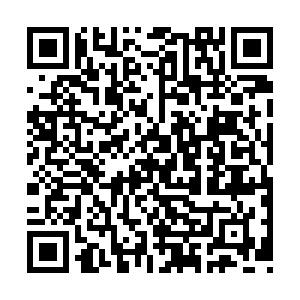中草药相关肝损伤的诊断: 实践中的挑战
DOI: 10.12449/JCH240805
利益冲突声明:本文不存在任何利益冲突。
作者贡献声明:董一诺、支阳负责数据采集,资料分析,文章起草工作,对本文贡献相同;唐洁婷、茅益民负责书写指导,文章审核和最终修改。
-
摘要: 随着草药和膳食补充剂(HDS)在全球范围内的应用日益广泛,中草药相关肝损伤(HILI)已成为药物性肝损伤的重要病因。由于HILI表现多样、病史采集困难、缺乏特异性生物标志物等原因,如何及时发现疑似患者并建立正确诊断成为实践过程中的主要难题。目前诊断HILI的过程中多用到因果关系评估,但缺乏大样本前瞻性队列验证。此外,对于HILI诊断的特异性生物标志物仍有待进一步研究。HILI的诊断和鉴别诊断是极具挑战性的问题,目前尚无公认的统一、标准的方法适用于全因HILI的诊断。
-
关键词:
- 中草药 /
- 化学性与药物性肝损伤 /
- 诊断 /
- 因果关系评估 /
- 生物标志
Abstract: With the increasingly wide application of herbal medicines and dietary supplements worldwide, herb-induced liver injury (HILI) has become an important etiology of drug-induced liver injury. Due to the diverse manifestations of HILI, the difficulty in medical history collection, and the lack of specific biomarkers, how to identify suspected patients and make a correct diagnosis has become a major challenge in practice. Causality assessment is commonly used in the diagnosis of HILI, but there is still a lack of prospective cohort studies with a large sample size. In addition, further studies are needed to search for the specific biomarkers for the diagnosis of HILI. The diagnosis and differential diagnosis of HILI are challenging, and currently there is still no universally accepted uniform and standard method for the diagnosis of all-cause HILI. -
[1] DEVARBHAVI H, AITHAL G, TREEPRASERTSUK S, et al. Drug-induced liver injury: Asia Pacific Association of Study of Liver consensus guidelines[J]. Hepatol Int, 2021, 15( 2): 258- 282. DOI: 10.1007/s12072-021-10144-3. [2] Branch of Hepatobiliary Diseases, China Association of Chinese Medicine, Branch of Chinese Patent Medicine, China Association of Chinese Medicine. Guideline for diagnosis and treatment of herb-induced liver injury[J]. J Clin Hepatol, 2016, 32( 5): 835- 843. DOI: 10.3969/j.issn.1001-5256.2016.05.003.中华中医药学会肝胆病分会, 中华中医药学会中成药分会. 中草药相关肝损伤临床诊疗指南[J]. 临床肝胆病杂志, 2016, 32( 5): 835- 843. DOI: 10.3969/j.issn.1001-5256.2016.05.003. [3] MAO Y, MA S, LIU C, et al. Chinese guideline for the diagnosis and treatment of drug-induced liver injury: an update[J]. Hepatol Int, 2024, 18( 2): 384- 419. DOI: 10.1007/s12072-023-10633-7. [4] Committee on DILI Prevention and Management, Chinese Medical Biotechnology Association; Study Group of Drug-Induced Liver Disease, Chinese Medical Association for the Study of Liver Diseases. Chinese guideline for diagnosis and management of drug-induced liver injury(2023 version)[J].[J]. Chin J Gastroenterol, 2023, 28( 7): 397- 431. DOI: 10.3760/cma.j.cn501113-20230419-00176.中国医药生物技术协会药物性肝损伤防治技术专业委员会, 中华医学会肝病学分会药物性肝病学组. 中国药物性肝损伤诊治指南(2023年版)[J]. 胃肠病学, 2023, 28( 7): 397- 431. DOI: 10.3760/cma.j.cn501113-20230419-00176. [5] NUNES DRDCMA, MONTEIRO CSJ, DOS SANTOS JL. Herb-induced liver injury-a challenging diagnosis[J]. Healthcare(Basel), 2022, 10( 2): 278. DOI: 10.3390/healthcare10020278. [6] LARREY D, VIAL T, PAUWELS A, et al. Hepatitis after germander(Teucrium chamaedrys) administration: Another instance of herbal medicine hepatotoxicity[J]. Ann Intern Med, 1992, 117( 2): 129- 132. DOI: 10.7326/0003-4819-117-2-129. [7] LIN G, WANG JY, LI N, et al. Hepatic sinusoidal obstruction syndrome associated with consumption of Gynura segetum[J]. J Hepatol, 2011, 54( 4): 666- 673. DOI: 10.1016/j.jhep.2010.07.031. [8] GARCÍA-CORTÉS M, STEPHENS C, LUCENA MI, et al. Causality assessment methods in drug induced liver injury: Strengths and weaknesses[J]. J Hepatol, 2011, 55( 3): 683- 691. DOI: 10.1016/j.jhep.2011.02.007. [9] TESCHKE R, DANAN G. Worldwide use of RUCAM for causality assessment in 81, 856 idiosyncratic DILI and 14, 029 HILI cases published 1993-mid 2020: A comprehensive analysis[J]. Medicines(Basel), 2020, 7( 10): 62. DOI: 10.3390/medicines7100062. [10] TESCHKE R, ZHU Y, JING J. Herb-induced liver injury in Asia and current role of RUCAM for causality assessment in 11, 160 published cases[J]. J Clin Transl Hepatol, 2020, 8( 2): 200- 214. DOI: 10.14218/jcth.2020.00009. [11] KOTHADIA JP, KAMINSKI M, SAMANT H, et al. Hepatotoxicity associated with use of the weight loss supplement Garcinia cambogia: A case report and review of the literature[J]. Case Reports Hepatol, 2018, 2018: 6483605. DOI: 10.1155/2018/6483605. [12] SMITH RJ, BERTILONE C, ROBERTSON AG. Fulminant liver failure and transplantation after use of dietary supplements[J]. Med J Aust, 2016, 204( 1): 30- 32. DOI: 10.5694/mja15.00816. [13] LAUBE R, LIU K. An unwanted complement: Rare case of potential liver injury induced by an interaction between ginseng and atorvastatin[J]. Br J Clin Pharmacol, 2019, 85( 7): 1612- 1613. DOI: 10.1111/bcp.13927. [14] HAYASHI PH, LUCENA MI, FONTANA RJ, et al. A revised electronic version of RUCAM for the diagnosis of DILI[J]. Hepatology, 2022, 76( 1): 18- 31. DOI: 10.1002/hep.32327. [15] ZHAO XY, WANG Y, LAI RT, et al. Validation of the revised electronic version of RUCAM for diagnosis of DILI in Chinese patients[J]. Hepatol Commun, 2024, 8( 4): e0235. DOI: 10.1097/HC9.0000000000000235. [16] ROCKEY DC, SEEFF LB, ROCHON J, et al. Causality assessment in drug-induced liver injury using a structured expert opinion process: Comparison to the Roussel-Uclaf causality assessment method[J]. Hepatology, 2010, 51( 6): 2117- 2126. DOI: 10.1002/hep.23577. [17] State Drug Administration. Technical guidelines for clinical evaluation of liver injury induced by traditional Chinese medicine[J]. J Clin Hepatol, 2018, 34( 7): 1403- 1409. DOI: 10.3969/j.issn.1001-5256.2018.07.008.国家药品监督管理局. 中药药源性肝损伤临床评价技术指导原则[J]. 临床肝胆病杂志, 2018, 34( 7): 1403- 1409. DOI: 10.3969/j.issn.1001-5256.2018.07.008. [18] HE TT, LIANG QS, WANG LP, et al. Diagnostic values of integrated evidence chain, Roussel Uclaf Causality Assessment Method, and Structured Expert Opinion Process method for drug-induced liver injury[J]. J Clin Hepatol, 2022, 38( 1): 141- 147. DOI: 10.3969/j.issn.1001-5256.2022.01.022.何婷婷, 梁庆升, 王丽苹, 等. 整合证据链、Roussel Uclaf因果关系评价法、结构化专家观点程序对药物性肝损伤的诊断效用分析[J]. 临床肝胆病杂志, 2022, 38( 1): 141- 147. DOI: 10.3969/j.issn.1001-5256.2022.01.022. [19] CHAU TN, CHEUNG WI, NGAN T, et al. Causality assessment of herb-induced liver injury using multidisciplinary approach and Roussel Uclaf Causality Assessment Method(RUCAM)[J]. Clin Toxicol(Phila), 2011, 49( 1): 34- 39. DOI: 10.3109/15563650.2010.537662. [20] HOOFNAGLE JH, BONKOVSKY HL, PHILLIPS EJ, et al. HLA-B*35:01 and green tea-induced liver injury[J]. Hepatology, 2021, 73( 6): 2484- 2493. DOI: 10.1002/hep.31538. [21] LI CP, RAO T, CHEN XP, et al. HLA-B*35:01 allele is a potential biomarker for predicting Polygonum multiflorum-induced liver injury in humans[J]. Hepatology, 2019, 70( 1): 346- 357. DOI: 10.1002/hep.30660. [22] SARGES P, STEINBERG JM, LEWIS JH. Drug-induced liver injury: Highlights from a review of the 2015 literature[J]. Drug Saf, 2016, 39( 9): 801- 821. [23] LEWIS PJ, DEAR J, PLATT V, SIMPSON KJ, et al. Circulating microRNAs as potential markers of human drug-induced liver injury[J]. Hepatology, 2011, 54( 5): 1767- 1776. [24] JIE Z, et al. Integrated expression profiles of mRNA and microRNA in the liver of Fructus Meliae Toosendan water extract injured mice[J]. Frontiers in Pharmacology, 2015, 6: 236. DOI: 10.3389/fphar.2015.00236. -

 本文二维码
本文二维码
计量
- 文章访问数: 825
- HTML全文浏览量: 516
- PDF下载量: 112
- 被引次数: 0


 PDF下载 ( 666 KB)
PDF下载 ( 666 KB)

 下载:
下载:

